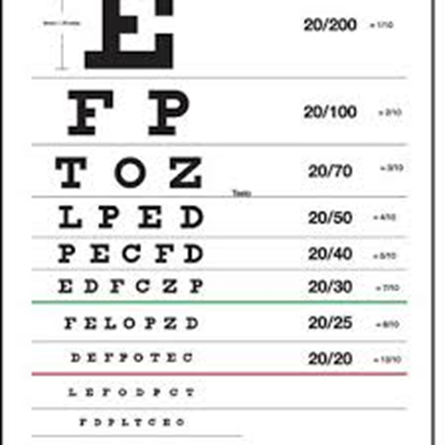The nurse working in an ophthalmology clinic is preparing to assess a patient's near vision. Which piece of equipment would the nurse use for this assessment?
Ophthalmoscope
Snellen Chart
Magazine
Penlight
The Correct Answer is B
Choice A Reason:
An ophthalmoscope is primarily used for examining the interior structures of the eye, such as the retina, and is not typically used for assessing near vision. It provides a view of the fundus of the eye, which is essential for diagnosing various eye conditions but does not directly assess a patient's reading or close-up vision.
Choice B Reason:
The Snellen Chart is traditionally used to measure distance visual acuity and would not be the first choice for assessing near vision. However, there are versions of the Snellen Chart or similar charts designed for near vision assessment, typically held at a reading distance of about 14 inches from the patient. These charts have rows of letters or symbols that decrease in size and are used to determine the smallest print size a person can read.
Choice C Reason:
A magazine can be a practical tool for assessing near vision informally, as it contains various sizes of print and is a good representation of everyday reading material. The nurse can ask the patient to read a specific paragraph to observe their ability to see and comprehend text at a close distance.
Choice D Reason:
A penlight is not used for assessing near vision. It is typically used to assess the pupillary light reflex or to illuminate specific areas of the eye during an examination. The penlight helps to evaluate the response of the pupils to light but does not measure the patient's ability to read or see objects up close.

Nursing Test Bank
Naxlex Comprehensive Predictor Exams
Related Questions
Correct Answer is C
Explanation
Choice a reason:
The left temporal bone would be the expected site of lateralization for sound in a Weber test if the patient had conductive hearing loss in the left ear. However, with unilateral sensorineural hearing loss, the sound typically lateralizes to the opposite ear, which is the ear with better hearing.
Choice b reason:
Lateralization to both ears equally during the Weber test would suggest either normal hearing or symmetrical hearing loss. In the case of unilateral sensorineural hearing loss, the sound is not perceived as equal in both ears because the affected ear does not hear as well as the unaffected ear.
Choice c reason:
In a patient with unilateral sensorineural hearing loss in the left ear, the Weber test will lateralize to the right ear, which is the ear with normal hearing. This occurs because the inner ear on the affected side is not able to transmit the sound as effectively as the unaffected side, making the sound seem louder in the ear with better hearing.
Choice d reason:
Lateralization to the left ear in the Weber test would indicate conductive hearing loss in the left ear, not sensorineural hearing loss. In sensorineural hearing loss, the sound vibrates to the ear with better cochlear function, which would be the right ear in this case.
Correct Answer is D
Explanation
The correct answer is d) Stage II.
Choice a reason:
Stage IV pressure ulcers are the most severe, with full-thickness skin loss and exposed bone, tendon, or muscle. Signs of stage IV include large-scale tissue loss, possibly including slough or eschar, and may include undermining and tunneling. The scenario described does not indicate such an advanced stage, as there is no mention of exposed deeper tissues or structures.
Choice b reason:
Stage III pressure ulcers involve full-thickness skin loss, potentially affecting subcutaneous tissue but not extending to underlying muscle or bone. The wound may have a crater-like appearance. The described condition does not match stage III, as there is no indication of the ulcer extending into subcutaneous tissue.
Choice c reason:
Stage I pressure ulcers present with intact skin and non-blanchable redness of a localized area usually over a bony prominence. The skin may be painful, firm, soft, warmer, or cooler compared to adjacent tissue. In the given scenario, the skin is not intact, ruling out stage I.
Choice d reason:
Stage II pressure ulcers are characterized by partial-thickness loss of dermis presenting as a shallow open ulcer with a red-pink wound bed, without slough. They may also present as intact or ruptured blisters. The description of the skin condition with erythema, serosanguineous drainage, and a blister-like appearance aligns with a stage II pressure ulcer.
Whether you are a student looking to ace your exams or a practicing nurse seeking to enhance your expertise , our nursing education contents will empower you with the confidence and competence to make a difference in the lives of patients and become a respected leader in the healthcare field.
Visit Naxlex, invest in your future and unlock endless possibilities with our unparalleled nursing education contents today
Report Wrong Answer on the Current Question
Do you disagree with the answer? If yes, what is your expected answer? Explain.
Kindly be descriptive with the issue you are facing.
